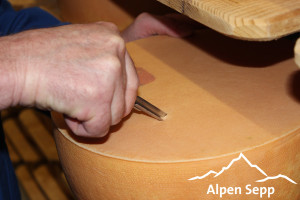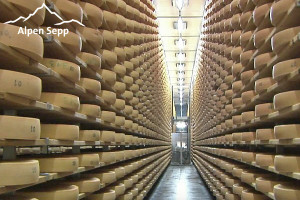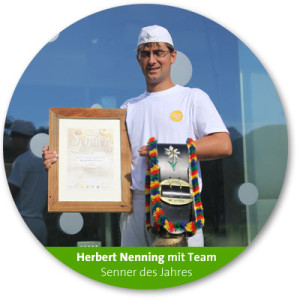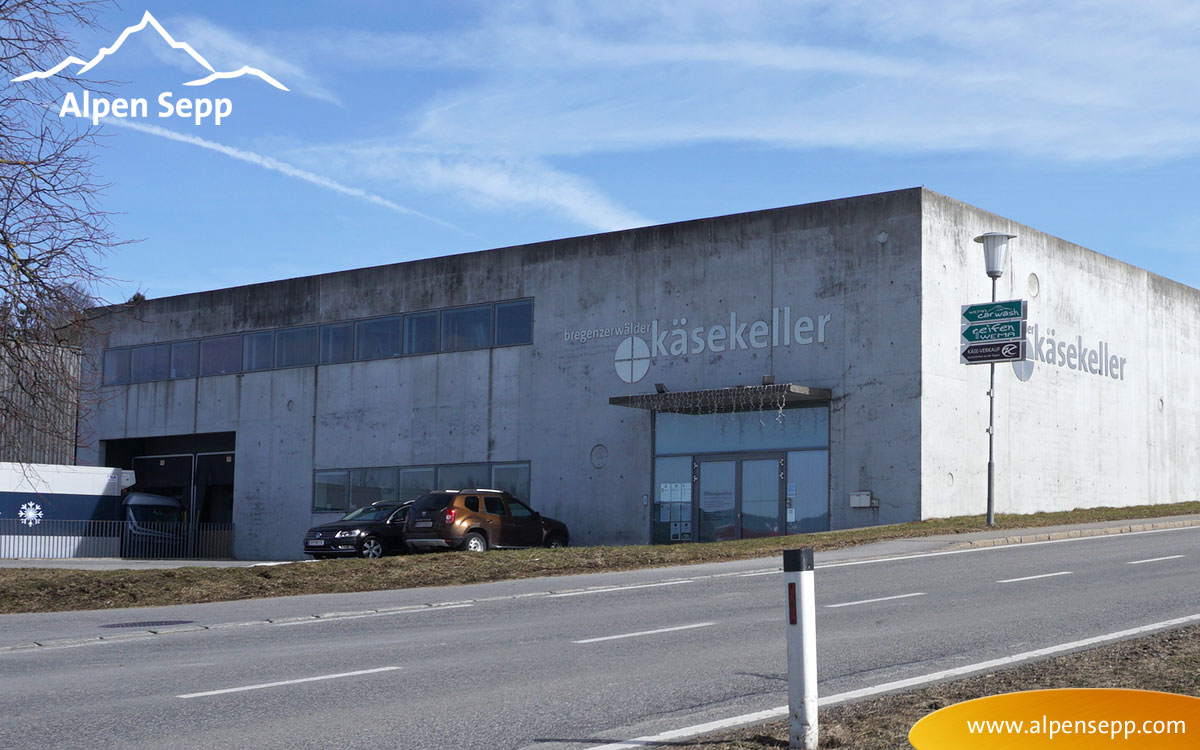From the Alpine Dairy, News
Alpine secret mountain cheese – storage and maturation in the Bregenzerwald cheese cellar
The mountain cheese in the cheese cellar and the cheese storage and care
Austrian MountainThe Vorarlberger Bergkäse (mountain cheese) is a regional cheese specialty from the Austrian province Vorarlberg. » More info cheese matures in a uniform room climate of around 13 degrees Celsius and at least 90 percent humidity. For this purpose, mainly stone earth cellars are used. This large, modern cheese ripeningAerobic cheese ripening means cheese ripening with oxygen. » More info room – the Bregenzerwälder Käsekeller – is reminiscent of them.

The monolithic structure made of exposed concrete right at the entrance to Lingenau fits self-confidently into the landscape. In the visitors’ room with a view of the ripening cellarThe alpine cheese is best located in a cellar with high humidity. » More info, you can watch the robot fully automated care of the more than 30,000 stored wheels of mountain cheese from all over the Bregenzerwald.
Concrete was chosen as the building material because the soil has to withstand constant moisture and pressure and large spans have to be bridged.
With these dimensions – after all, 33,000 cheese wheels ripen here – the building alone cannot keep the room climate constant. The cheese cellar is therefore a fully air-conditioned production facility in which robots rub in and turn the cheese wheels on a daily basis.
The transport of fresh mountain cheese to the cheese cellar

Every second day, the fresh mountain cheese wheels from the manufacturing dairy are transferred to the Bregenzerwald cheese cellar, weighed and stored. It is important that the cheese is exclusively stored on spruce boards.
As soon as the cheese has been stored in the cheese warehouse, the 28 kg of cheese wheels are cared for with brine. Every second day the cheese wheels are rubbed with brine. Only iodine-free rock salt is used as salt.
This brine care forms the protective cheese rindTo protect the cheese wheel, it is put into salt bath or turned into dry salt. The salt removes water from the cheese and it dries faster. So the rind is formed. » More info over time. It is important that the cheese wheel is turned every time. The underside (lying side) and the sides of the cheese are rubbed with brine – the dryThe dry matter refers to that portion of the cheese that remains after removal of the water contained. The more water is removed from the cheese, the lower its dry matter and vice versa. » More info upper side is placed on the wooden boards by turning. This ensures that it is always dry between the wood and the cheese.
Mountain cheese care after cheese rind formation
After the cheese rind has been successfully formed, the “Cheese wheel-Turning-Rhytm” of the cheese wheel is reduced to 1x per week for sale.
It is very important that the cheese rind is not damaged during the cheese storage periodThe milk period is also called the lactation period. It is the time when farm animals such as cows, sheep or goats keep milk for milk production. » More info of 4-12 months and longer. Such a rind injury would be fatal and can lead to the total destruction of a mountain cheese wheel. This is always checked by the cellar staff.

The important role of the master dairyman
Once a week Herbert Nenning, master dairyman of the alpine dairy, travels to the mountain cheese warehouse and extensively controls the development of his mountain cheese treasures. Only in this way can he ensure that the cheese development meets his desired premiumHere in Austria, we call our fresh, natural milk for our cheese production hay milk (hay mild standard) - in Germany it is different. » More info qualityDetecting cheese defects and quality - on the cheese dough. Recognizing cheese defects requires some practice. » More info standards.
This is how 3 mountain cheese specialities are created
- Rod mountain cheese with meltingMelting cheese is a proven process to refine and make it more durable. » More info behaviour: matured for 3 months
- Mild mountain cheese: 4-6 months matured
- Spicy mountain cheese: 9-12 months matured
An error in hay-milk raw milkThe cheese is made from fresh milk, which was not treated at the beginning of the cheese making process (raw milk). It is almost as it comes from the cow's udder. » More info or in mountain cheese production cannot be corrected afterwards. It is therefore all the more important that all persons involved in the cheese value chain always give their best.
Only when a mountain (alpine) production batch reaches the perfect moment of taste is it released as a sales batch.


















